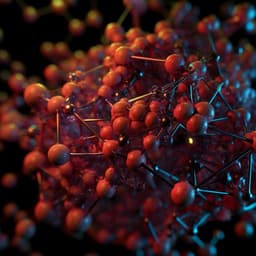
Engineering and Technology
Predicting Synthesizability of Crystalline Materials via Deep Learning
A. Davariashtiyani, Z. Kadkhodaie, et al.
Discover how a deep-learning model leverages three-dimensional images of crystal structures to predict the synthesizability of hypothetical crystals. This groundbreaking research, conducted by Ali Davariashtiyani, Zahra Kadkhodaie, and Sara Kadkhodaei, showcases an innovative approach to identifying viable materials for battery electrodes and thermoelectric applications.
~3 min • Beginner • English
Related Publications
Explore these studies to deepen your understanding of the subject.







